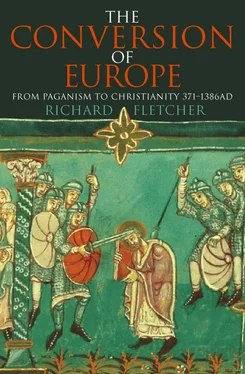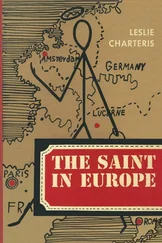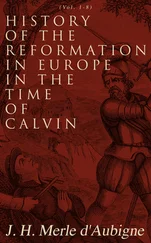The Huns changed the terms of Romano-Gothic relations for ever. A nomadic people from central Asia, wonderfully skilled with horse, bow and lassoo and with a reputation as pitiless enemies, they began to move westwards – no one really knows why – in the second half of the fourth century. In the early 370s they collided with the Greuthingi, the eastern group of Goths settled between the Dniester and the Dnieper. The Greuthingi were defeated, the survivors among them enslaved. In the wake of these events the Tervingi sought asylum within the Roman empire. Reluctantly, Valens agreed to this request. In 376 the Tervingi crossed the Danube on to imperial territory. Relations between Goths and Romans broke down in the following year when the imperial government failed to keep its promises about supplying foodstuffs to the refugees. War followed in 378. A decisive battle was fought near Adrianople in August; the Roman army was defeated and the Emperor Valens killed at the hands of the Tervingi under their leader Fritigern. There ensued four years of confusion during which the Goths failed to take Constantinople and pillaged Thrace. In 382 a settlement was reached with the new emperor, Theodosius I: Fritigern and his followers were permitted to settle peacefully in the province of Moesia, south of the Danube and just west of the Black Sea. There they remained until 395 when a new leader, Alaric, would start the Goths on further travels which would take them to Italy, where they would sack Rome in 410; then to Aquitaine, where they were again settled under treaty arrangements in 418; and finally to Spain, where the Gothic monarchy would flourish until overthrown by the forces of Islam early in the eighth century.
Among those who were carried off into permanent captivity in the course of the Gothic raids into Pontus in the middle of the third century were the ancestors of Ulfila. The family evidently retained a memory of its origins. Ulfila knew that his ancestors had lived in a village called Sadagolthina, near Parnassus in Cappadocia, about fifty miles south of modern Ankara. (This is at least 150 miles from the nearest point on the Black Sea coast: it shows how far inland the Gothic raiders had penetrated and explains something of the terror they inspired.) We know too that this band of displaced persons in Gothia not only retained but also diffused their faith. ‘They converted many of the barbarians to the way of piety and persuaded them to adopt the Christian faith,’ tells the fifth-century historian Philostorgius, one of the principal sources for what little we know of Ulfila. It may be that the family intermarried with Goths; so much is suggested by Ulfila’s Gothic name: we do not know. Indeed, it must be stressed that we know absolutely nothing whatsoever about the conditions in which captives and their descendants lived among the Goths. This is one of several areas of puzzlement and uncertainty which necessarily render our understanding of Ulfila so hazy. Another concerns his education. Ulfila had been ‘carefully instructed’, recorded his pupil Auxentius. He was fluent in Greek, Latin and Gothic, in all three of which languages he composed ‘several tractates and many interpretations’. His translation of the Bible into Gothic was a towering intellectual achievement. In the world of late antiquity education to anything beyond the most elementary level was only for the rich, or those who could find a rich patron. How and where did Ulfila get his education? We have not the remotest idea.
At the age of thirty, when he had attained the rank of lector or reader, one of the minor orders of the church, Ulfila was sent to Constantinople by the ruler of the Tervingi as a member of a diplomatic mission. This would have been in about 340 or 341, some years after the peace of 332. The imperial throne was now occupied by Constantius II (337–61), son of the great Constantine. Again, we wonder why Ulfila was chosen to serve in this capacity. While in Constantinople he was consecrated a bishop by the patriarch. (There are formidable difficulties about the date of his consecration, which I here pass over.) His commission was to be ‘bishop of the Christians in the Gothic land’; to serve, that is, an existing Christian community – by whom indeed his episcopal consecration had presumably been requested – not to undertake specifically missionary activities.
His episcopate ‘in the Gothic land’ lasted for seven years, which takes us to 347/8. At the end of this period the ‘impious and sacrilegious’ (but unnamed) ruler of the Tervingi initiated ‘a tyrannical and fearsome persecution’ of the Christians under his rule. Ulfila evidently judged that discretion was the better part of valour and led a large body of refugee Christians across the Danube and into asylum on Roman soil. Welcomed by the authorities with honour and respect, Ulfila and his flock received from the emperor land on which to settle near the city of Nicopolis (Veliko Tǔrnovo in the north of modern Bulgaria), some thirty miles south of the frontier in the province of Moesia Inferior. We are told that Constantius held Ulfila ‘in the highest esteem’ and would often refer to him as ‘the Moses of our time’ because through him God had liberated the Christians of Dacia from barbarian captivity.
Ulfila spent the rest of his life at Nicopolis, ministering to his congregations, studying, teaching, translating the Bible. He was also drawn into the principal theological controversy of the day, the Trinitarian debate arising from the teachings of the Alexandrian priest Arius (d. 336). Arianism was the doctrine that the Son of God was created by the Father. Its opponents, who claimed the name of Catholic which literally means ‘general’ or ‘universal’ – taught that Father, Son and Holy Spirit were co-eternal and equal in Godhead. To put this in another way, Arius sought to avoid any dilution of monotheism by stressing the indivisibility, the majestic one-ness and omnipotence of God, and the subordination to Him of the Son. To those not attuned to theological debate, the relationship between the three Persons of the Trinity is an unrewarding topic. We must accept, first, that it was long and keenly debated in the fourth century and that it nourished some of the finest minds of the age. Second, we should bear in mind that at the time – whatever the dispute might have been made to look like by later commentators – it was not a simple matter of a straight fight between orthodoxy and heresy. Trinitarian orthodoxy was not something given, like the doctrines of the Resurrection or the Ascension. It was in the process of being hammered out by recourse to difficult scriptural texts which could yield diverse interpretations. The problem was to find a doctrinal formula which would satisfy several different theological factions. Third, the debate was one which necessarily had a political dimension. With the arrival on the scene of imperial patronage of the Christian church, theological controversy could no longer be simply a matter of intellectual debate. What was now also at stake was access to huge and unprecedented material resources, legal privileges and influence at the imperial court. The penalties of finding yourself on the losing side were therefore substantial. Constantine, having once publicly associated himself with Christianity, had taken an assertive if not always instructed role in ecclesiastical controversy. He it was who had summoned and presided over the council of Nicaea in 325, the first major attempt to find a doctrinal formulation which would be widely acceptable; the Nicene creed was the result. This settlement of the dispute held the field, though not unchallenged, until Constantine’s death in 337. But his son Constantius favoured the Arian tendency and under his patronage successive councils – Antioch in 341, Sirmium in 351, Rimini in 359, Constantinople in 360 – drafted credal statements which, though necessarily in the circumstances somewhat fudgy, leant away from the Nicene position towards the Arian one. Ulfila was consecrated a bishop by one of the leading spirits of this ‘court Arianism’, attended the council of Constantinople in 360 and was on close terms with an emperor who was widely held to be sympathetic to Arianism. The successor of Constantius in the eastern half of the empire, after the brief resign of Julian the Apostate (361–3), was Valens (364–78), who proved another protector of the Arians. One fifth-century historian, Sozomen, tells us that Ulfila was chosen to head the embassy to Valens which sought permission for the Tervingi to enter the empire in 376. If true, this report would suggest that Ulfila had contrived to maintain the connections with the imperial court which he had enjoyed in the time of Constantius. But the tide was turning against the moderately Arian or non-Nicene party. The Emperor Theodosius I (379–95) was an unswerving partisan of the doctrinal formulations of Nicaea. Decrees enjoining the acceptance of the Nicene creed were issued in 380. In the following year Arian churches were confiscated and handed over to the Catholics, and all meetings of the heretics were banned. The last glimpse we have of Ulfila is in 383, travelling to Constantinople to attend another church council in the company of two Danubian bishops, deposed for Arianism, whose cause he was going to plead with the emperor. He died in Constantinople shortly afterwards.
Читать дальше












